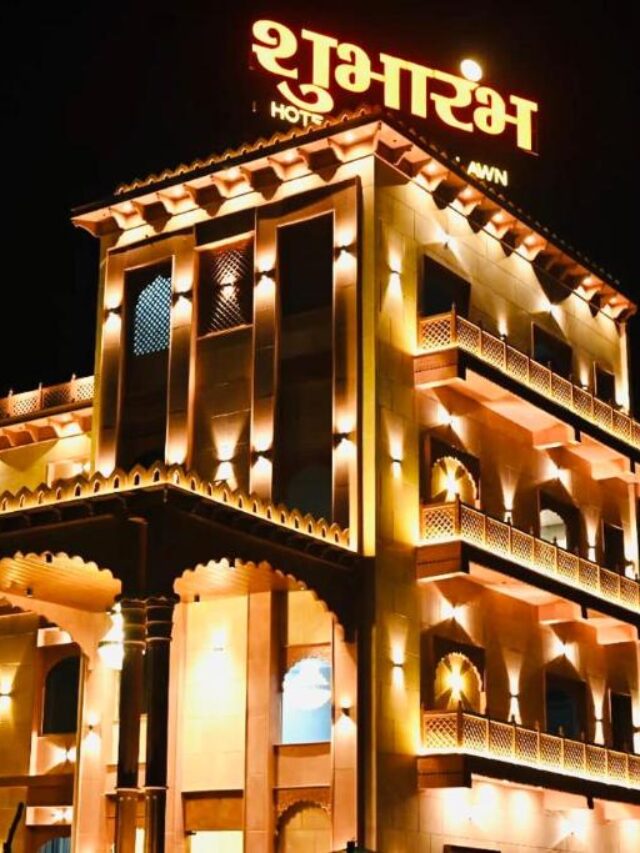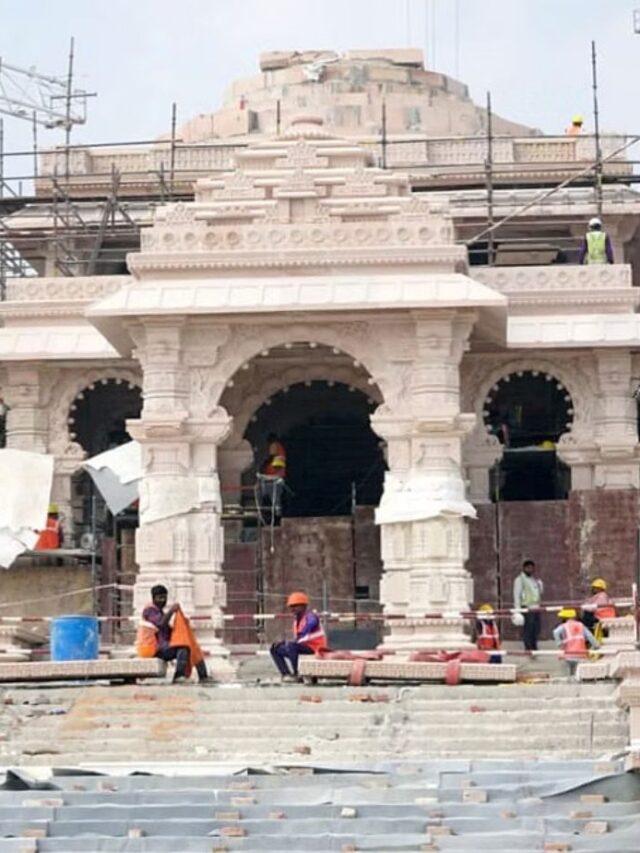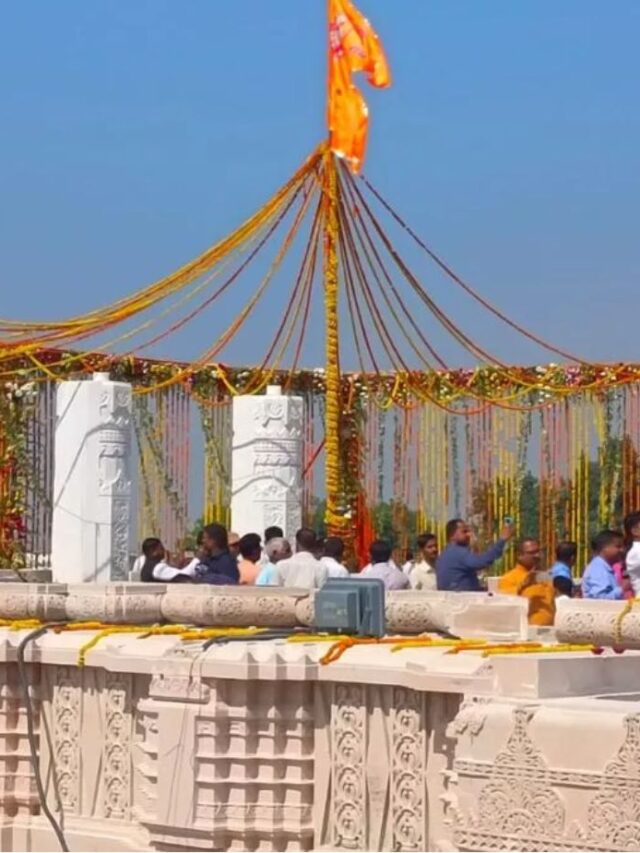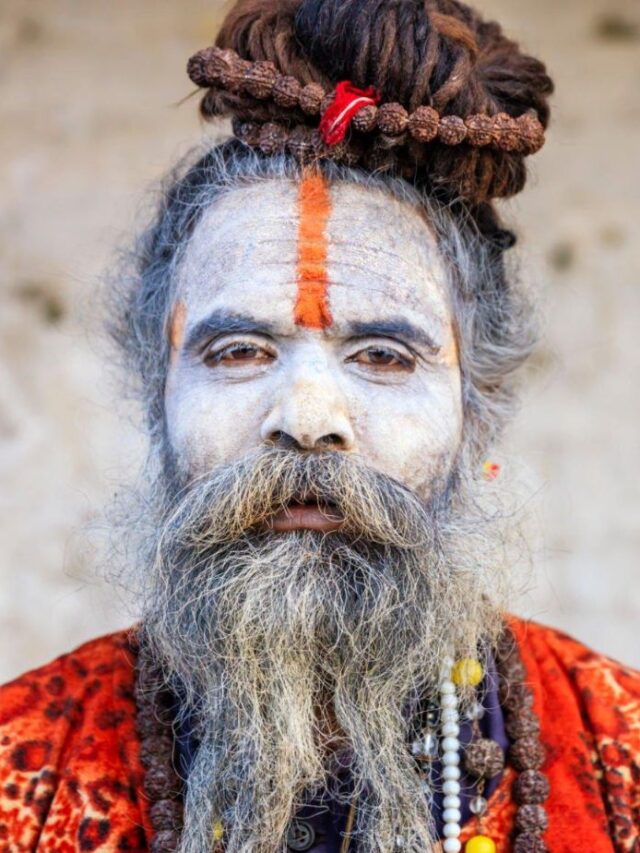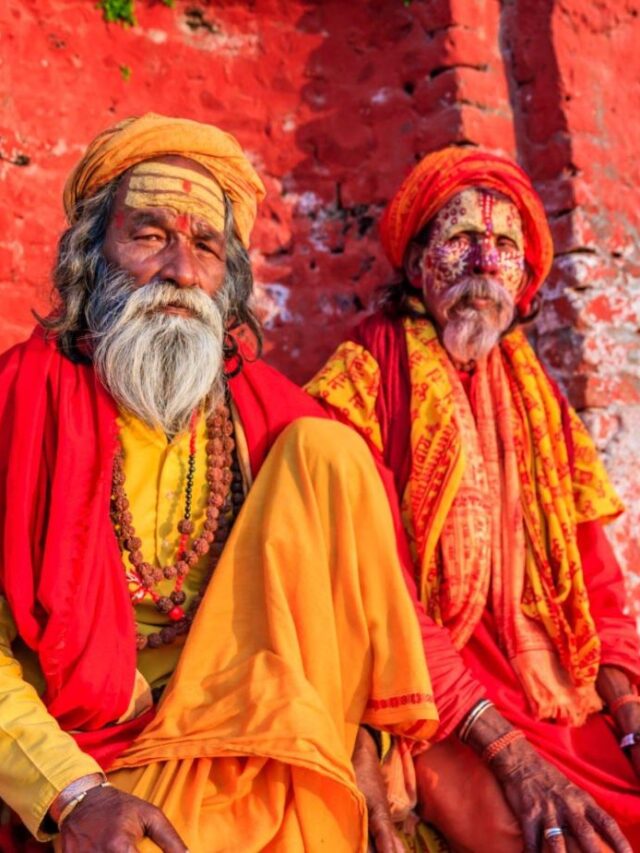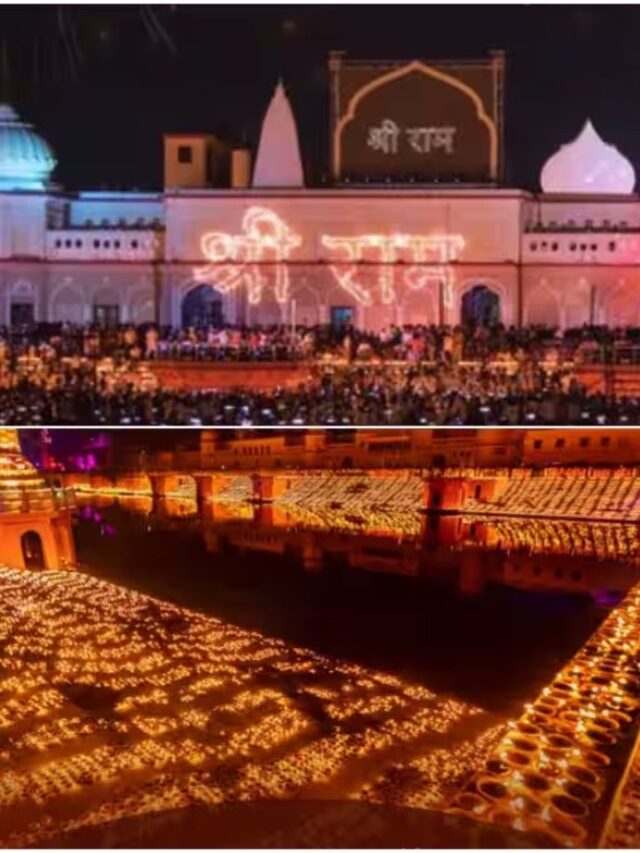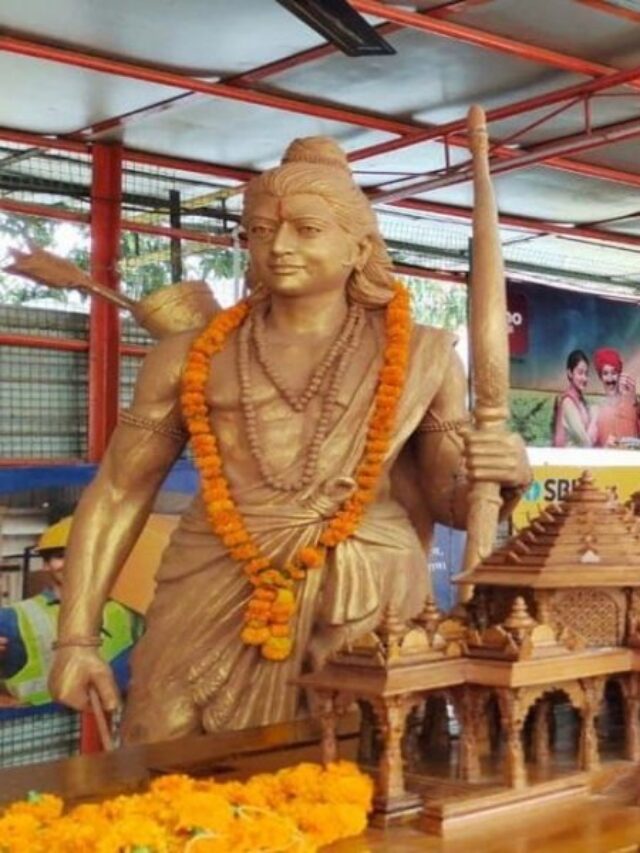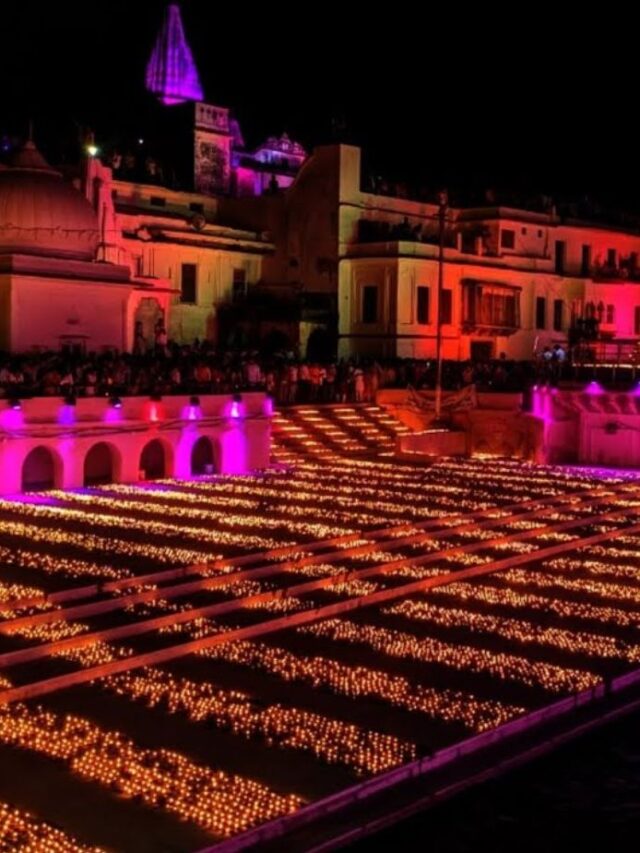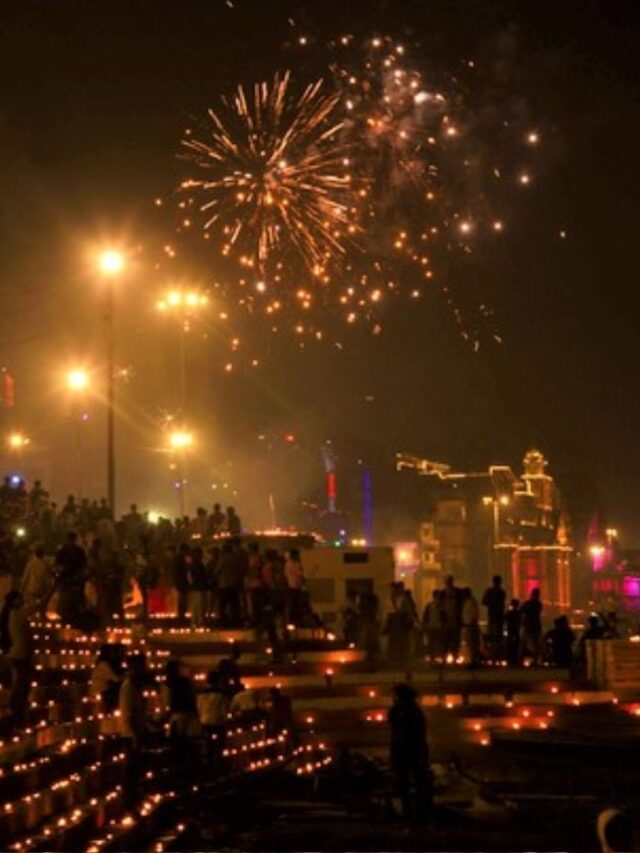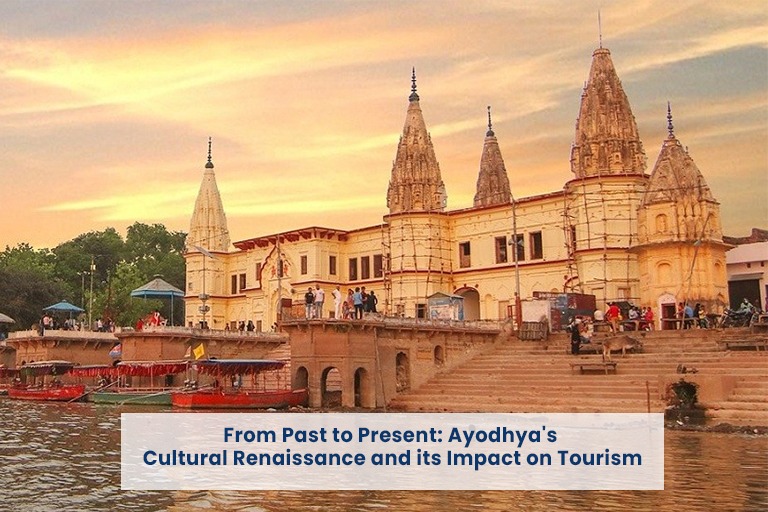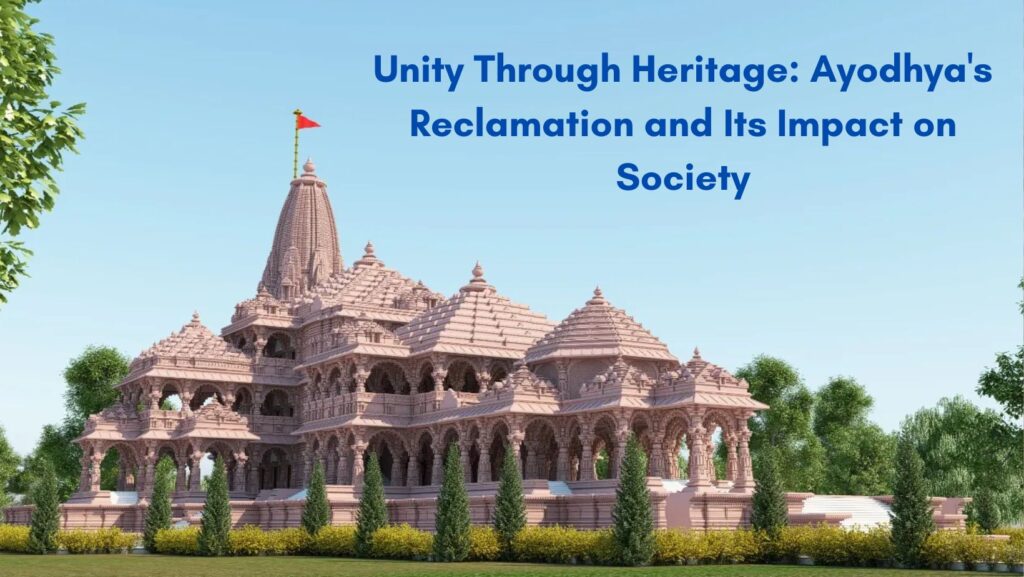14 Kosi Parikrama in Ayodhya
14 Kosi Parikrama Date : Wed-Thu, 21-22 Nov, 2023
When is 14 Kosi Parikrama 2023: 14 Kosi Parikrama is on 21-22 Nov, 2023.
When is Kosi Parikrama 2023: It is on 24 Nov, 2023.
On the Navami of Shukla Paksha of Kartik month, circumambulation is done through Chaudahkos Parivrut of Ayodhya. Devotees come to Ayodhya to perform this parikrama and the local people wait for Navami. On arrival of the date, after taking bath in Saryu river, touching the parikrama path with glass and meditating on God, start the parikrama. During the parikrama, they walk barefoot and sing bhajans etc. After reaching the starting point of the parikrama, they visit the temples of Ayodhya and return to their home.
There are mainly 3 types of circumambulation in Ayodhya: the first of 84 Kosi, the second of 14 Kosi, and the third of 5 Kosi. There are 3 kilometers in 1 kos. The border of Ayodhya is divided into three parts: Awadh region in 84 Kosi, Ayodhya city in 14 Kosi, and Ayodhya region in 5 Kosi. Therefore, there are three types of parikrama. Sadhus and saints participate in 84 Kosi Parikrama, while common people participate in 14 Kosi and 5 Kosi Parikrama.
The main purpose of Kosi Parikrama is that according to Hindu religion, the soul travels through 84 lakh births, and during this process the sins committed in previous births are destroyed. It is said that sins are destroyed while doing parikrama.
Also read – What is Kosi Parikrama? Ayodhya’s Sacred Journey
14, Kosi Parikrama Route 2023, Ayodhya: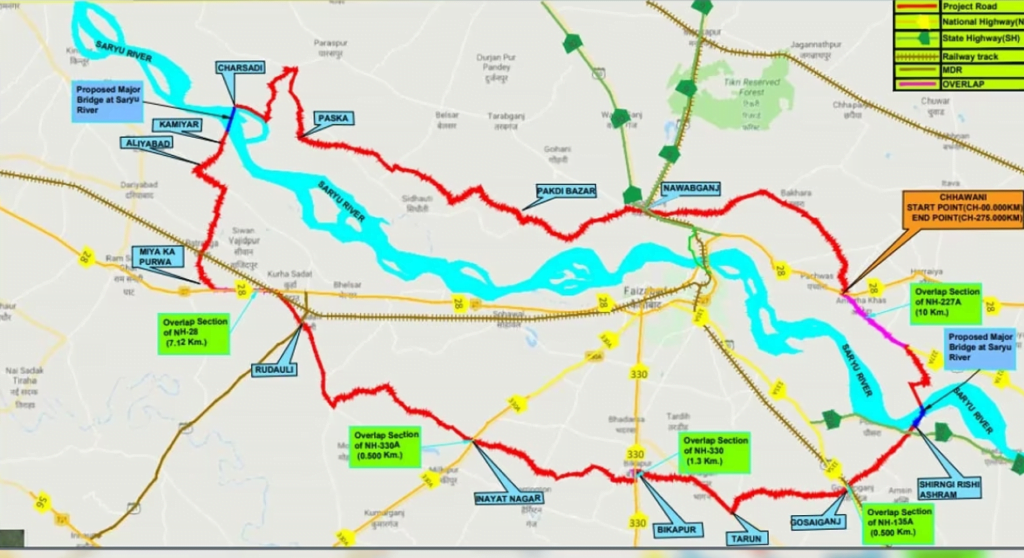
The Kosi Parikrama Route in Ayodhya, India, is a profound spiritual journey that devout pilgrims undertake. This pilgrimage revolves around circumambulating the Kosi River and exploring the holy city of Ayodhya, known for its deep-rooted cultural and religious significance. In this article, we will delve into a day-by-day account of the Kosi Parikrama in 2023, offering insights into the spiritual experience it entails.
The Significance of Kosi Parikrama
Kosi Parikrama holds immense spiritual importance for Hindus. It is believed that by embarking on this pilgrimage, one can cleanse their sins, seek blessings, and attain spiritual growth. The route encompasses numerous ancient temples, sacred ghats, and historical landmarks that connect pilgrims with their deep-rooted faith.
Preparation for the Pilgrimage
Before commencing the Kosi Parikrama, it’s essential to make necessary preparations. This includes physical fitness, obtaining the required permits, and gathering information about the route, the local culture, and religious customs. It’s also important to carry essential supplies for the journey.
How to Join 14 Kosi Parikrama in Ayodhya
Day 1: Commencing the Journey
The pilgrimage begins with great fervor. Pilgrims start by offering prayers at the Dashrath Mahal and seeking Lord Rama’s blessings. Afterward, they take the first step of the journey, which leads them to the heart of Ayodhya.
Day 2: Exploring Ayodhya
Day 2 is dedicated to devote our time to discovering the captivating city of Ayodhya, celebrated for its abundant historical and cultural legacy. Devotees embark on a journey to significant locales such as Ram Janmabhoomi, Hanuman Garhi, and Kanak Bhavan, embracing the profound spirituality that permeates this ancient city.
Day 3: Moving Towards the Kosi River
Pilgrims make their way towards the Kosi River, a sacred water body that holds great importance in Hindu mythology. The day is spent in preparation for the circumambulation of the river and connecting with fellow pilgrims.
Day 4: Experiencing the Banks of Kosi River
On this day, pilgrims reach the banks of the Kosi River and begin the Parikrama, circumambulating the holy river with devotion and prayer. The scenic beauty and spiritual aura of the river create a serene atmosphere.
Day 5: Embracing Spirituality at Saryu Ghat
Pilgrims make a stop at Saryu Ghat, where they participate in rituals and prayers. This ghat is believed to be the place where Lord Rama took a holy dip during his time, making it a significant point in the pilgrimage.
Also read – How to Register for Ayodhya Deepotsav 2023
Day 6: Pilgrimage Continues to Treta Ke Thakur
The journey takes pilgrims to Treta Ke Thakur, a revered temple dedicated to Lord Rama. This day is marked by deep devotion and spiritual connection as they visit this ancient temple.
Day 7: Seeking Blessings at Nageshwarnath Temple
Pilgrims visit the Nageshwarnath Temple, dedicated to Lord Shiva, seeking his blessings and spiritual enlightenment. The temple’s historical significance adds to the spiritual experience.
Day 8: Navigating Through Ancient Temples
Day 8 is dedicated to exploring other ancient temples and sites along the route, including the Raja Mandir, Swarg Dwar, and Bahu Begum Ka Maqbara, which reflect the rich cultural and architectural heritage of Ayodhya.
Day 9: Connecting with the Locals
Pilgrims get an opportunity to connect with the local residents of Ayodhya, understanding their way of life, culture, and traditions. This interaction adds depth to the pilgrimage experience.
Day 10: Serenity at Guptar Ghat
Guptar Ghat is another significant site on the route, associated with Lord Rama. Pilgrims find solace in the serene surroundings and engage in meditation and prayers.
Day 11: A Visit to Sita Samahit Sthal
This day includes a visit to Sita Samahit Sthal, believed to be the place where Sita, the consort of Lord Rama, entered the Earth. Pilgrims seek her blessings and reflect on her sacrifice.
Also read – How to Get Free Entry Pass for Ayodhya Diwali 2023
Also read – The Process of Ayodhya Diwali Registration 2023
Day 12: The Last Leg of Kosi Parikrama
The final day of Kosi Parikrama completes the circumambulation of the Kosi River. Pilgrims return to Ayodhya with a profound sense of spirituality, having cleansed their souls and seeking Lord Rama’s blessings.
Conclusion
The 14-day Kosi Parikrama in Ayodhya is a remarkable spiritual journey that connects pilgrims with their faith, history, and culture. It offers a unique opportunity to cleanse the soul, seek blessings, and explore the rich heritage of Ayodhya. This pilgrimage is a testament to the enduring spirituality of the region.
Frequently Asked Questions
- Is Kosi Parikrama suitable for all age groups?
- Yes, people of all age groups can undertake the Kosi Parikrama. However, physical fitness is essential.
- What is the best time to embark on Kosi Parikrama?
- The best time for the pilgrimage is during the months of October to March when the weather is pleasant.
- Are there accommodations available along the route?
- Yes, there are several accommodations and dharamshalas (guest houses) available for pilgrims.
- Is photography allowed during the pilgrimage?
- Yes, photography is generally allowed, but it’s advisable to respect the sanctity of the religious sites.
-
What should I wear during Kosi Parikrama?
- Wear comfortable and modest clothing that is suitable for a religious journey.

